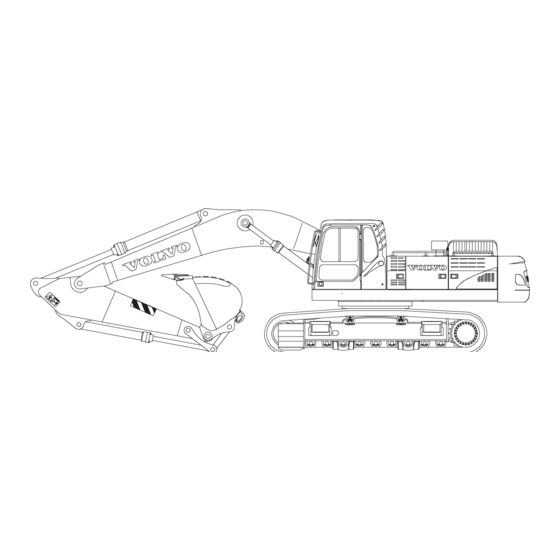Advertisement
Quick Links
Download this manual
See also:
Operator's Manual
EC330B/EC360B/EC460B/EC70OB SERVICE TRAINING
This material is combined as below.
01_General
02_Engine
02-1_D10B Engine(EC330B-EC360B)
02-2_D12C Engine(EC330B-EC460B)
02-3_D12D Engine(EC330B-EC460B)
02-3_D16E Engine(EC700B)
03_Electric system
03-1_Before IECU application(EC330B-EC460B)
03-2_IECU application(EC330B-EC460B)
03-3_D12D Engine application(EC330B-EC460B)
03-4_EC700B
04_Power Transmission
04-1_Swing motor(EC330B/EC360B)
04-2_Swing motor(EC460B)
04-3_Swing motor(EC700B)
04-4_Travel motor_Old(EC330B/EC360B)
04-5_Travel motor_New(EC330B/EC460B)
04-6_Travel motor(EC460B)
04-7_Travel motor(EC700B)
05_Brake System
06_Steering System
07_Frame & Undercarriage
08_Aircon
09_Hydraulic
09-1_Hydraulic_D10B & D12C(EC330B/EC360B)
09-2_Hydraulic_D12D(EC330B-EC360B)
09-3_Hydraulic_D12C(E460B)
09-4_Hydraulic_D12D(EC460B)
09-5_Hydraulic(EC700B)
09-6_Hydraulic common
Advertisement

















Need help?
Do you have a question about the EC330B and is the answer not in the manual?
Questions and answers